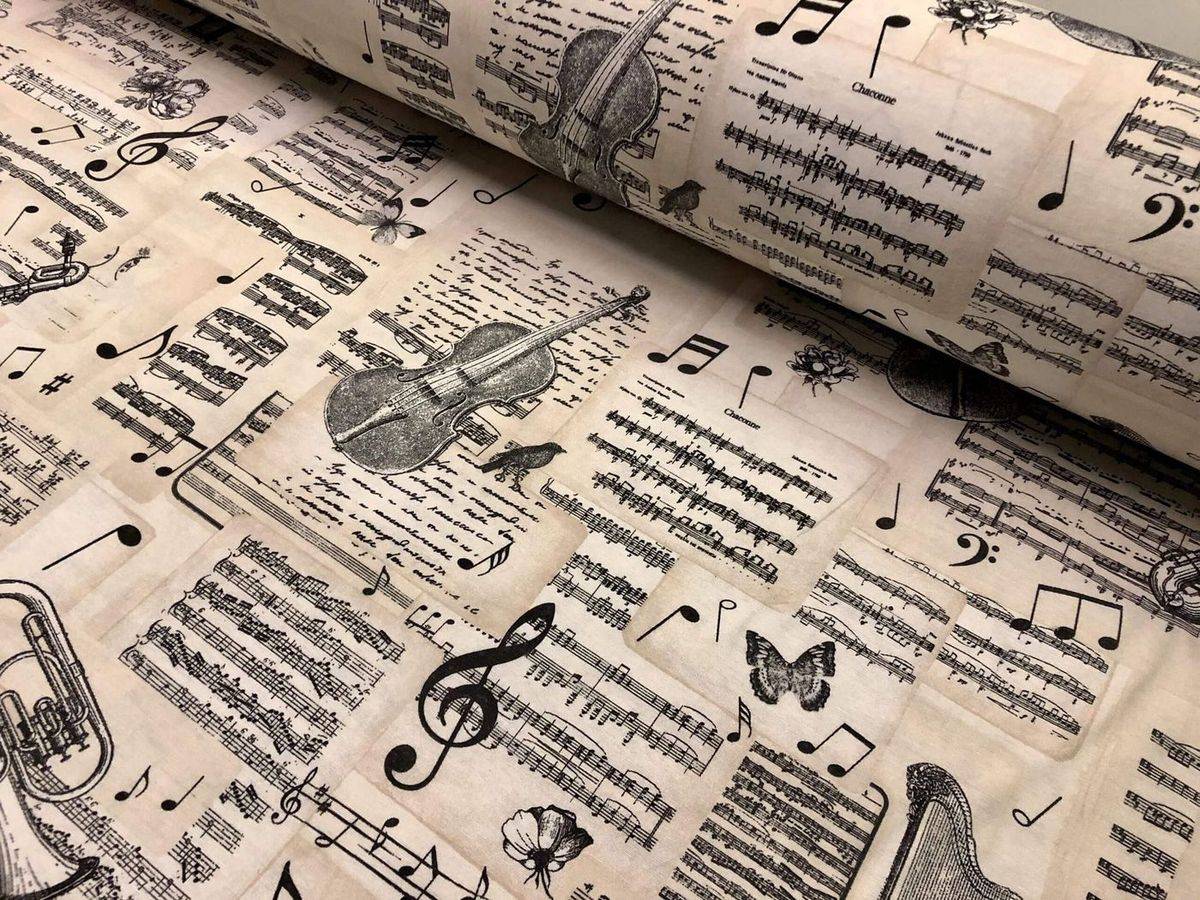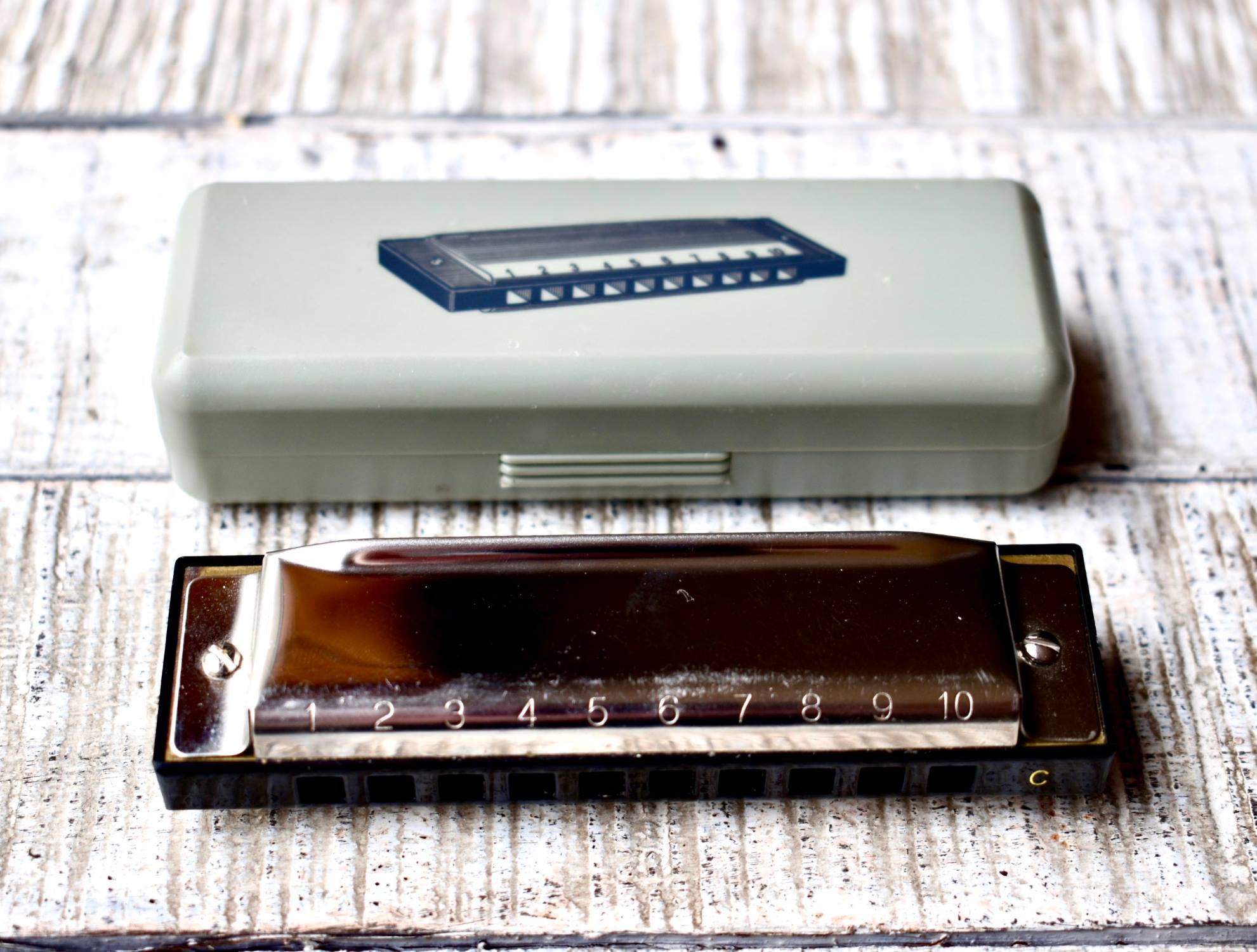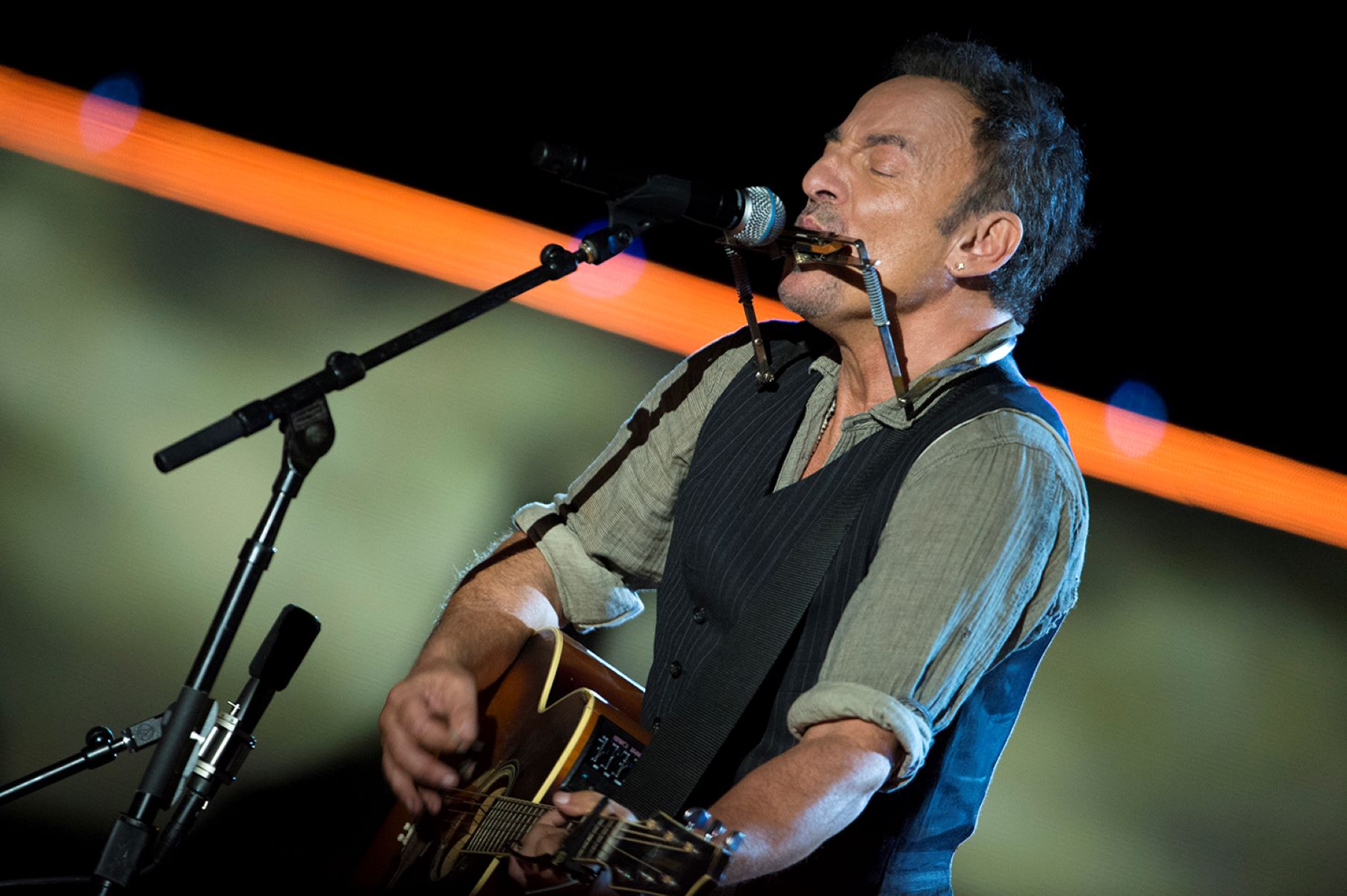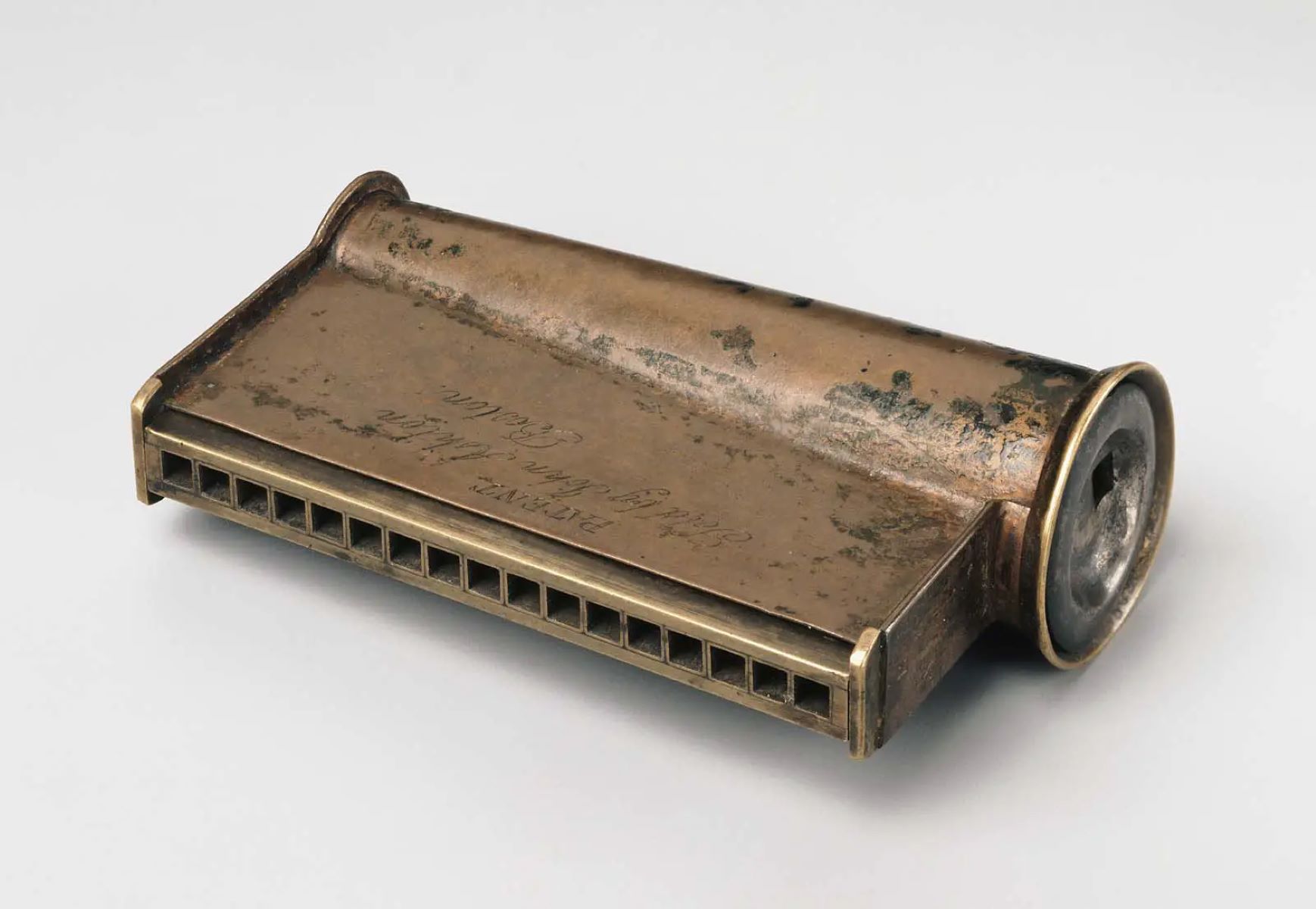Home>Instruments>Harmonica>What Are The Notes On A Harmonica
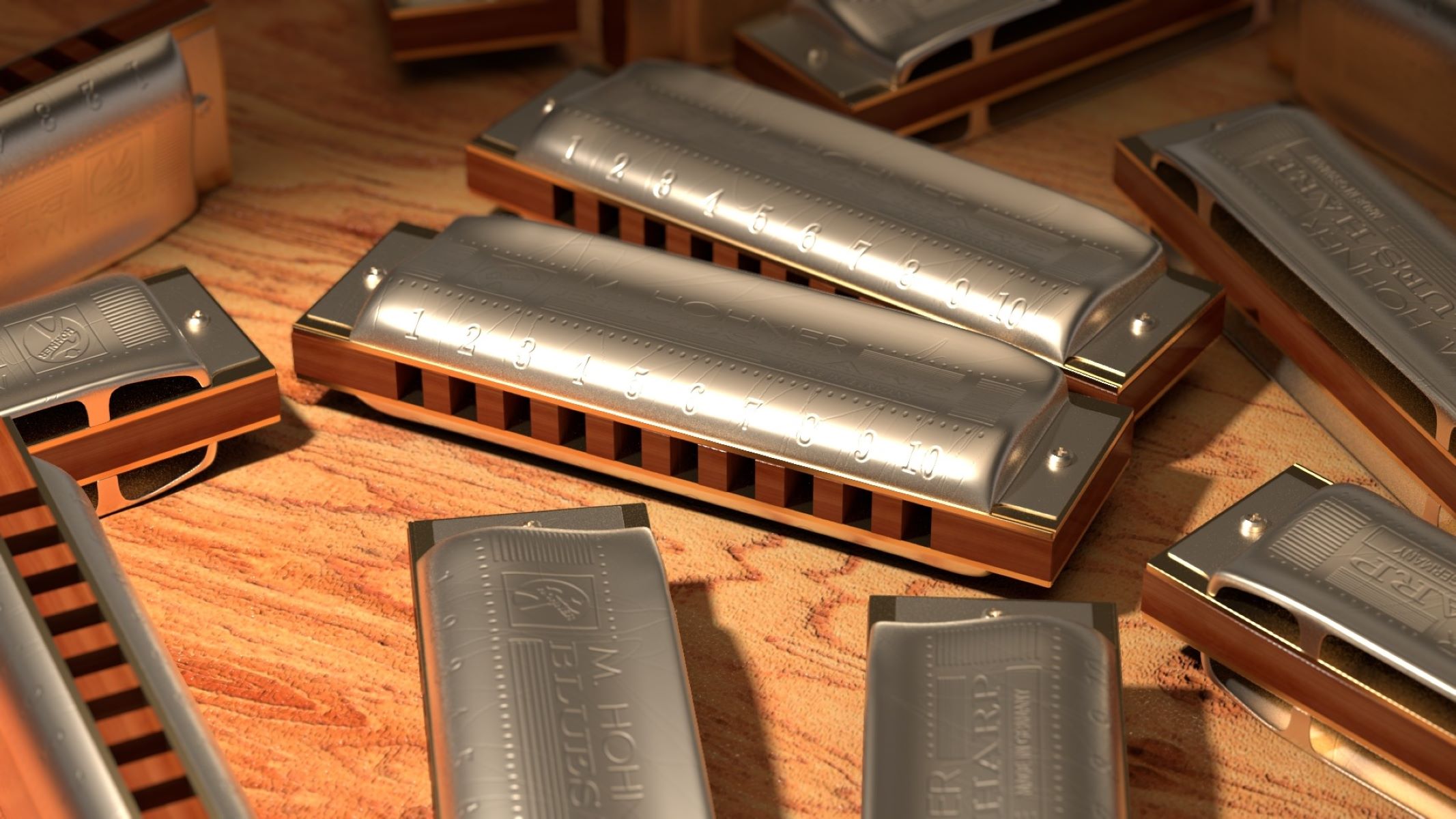

Harmonica
What Are The Notes On A Harmonica
Modified: February 3, 2024
Learn about the notes on a harmonica and improve your playing skills with our comprehensive guide. Discover the secrets to mastering the harmonica.
(Many of the links in this article redirect to a specific reviewed product. Your purchase of these products through affiliate links helps to generate commission for AudioLover.com, at no extra cost. Learn more)
Table of Contents
Introduction
Welcome to the wonderful world of harmonica playing! Whether you’re a beginner or an experienced musician, the harmonica is a versatile and captivating instrument that is sure to bring joy and inspiration to your musical journey. In this article, we will explore the notes on a harmonica, how they are produced, and various playing techniques to help you unlock the full potential of this tiny but mighty instrument.
The harmonica, also known as the mouth organ or harp, is a small wind instrument that is played by blowing air into it through the holes and manipulating the sound with your mouth and hands. It has a distinctive sound that can range from soulful and bluesy to lively and upbeat. One of the unique aspects of the harmonica is its portability, allowing you to carry it with you wherever you go and create music anytime.
Before we dive into the notes on a harmonica, let’s first understand the basics of the instrument. A standard harmonica consists of a comb, which is the main body of the instrument that holds the reed plates, and cover plates that protect the reeds. The reed plates contain a series of reeds, each tuned to a specific note. When air is blown or drawn through the holes, the reeds vibrate, producing sound. The pitch of the notes is determined by the length, thickness, and tension of the reeds.
Now that we have a basic understanding of the harmonica, let’s demystify the world of harmonica notes. Understanding the notes is essential for playing melodies, chords, and improvising on the harmonica. Each hole on the harmonica is assigned a specific note, and by blowing or drawing on different holes, you can create a wide range of musical tones. The layout of the notes on the harmonica can vary depending on the type and the key of the harmonica.
In the next sections, we will explore the different types of harmonica notes, playing techniques for each note, and even some popular harmonica songs to help you practice and develop your skills. So, grab your harmonica, get ready to embark on a musical adventure, and let’s explore the fascinating world of harmonica notes!
Basics of Harmonica
Before we delve into the world of harmonica notes, it’s important to establish a strong foundation in the basics of the instrument. Understanding the construction, types, and playing techniques of the harmonica will pave the way for your harmonica journey.
The harmonica is a small wind instrument that belongs to the free reed family. It consists of a comb, which is the body of the instrument, and reed plates mounted on both sides of the comb. The reed plates contain reeds, thin strips of metal that vibrate when air is blown or drawn through the holes of the harmonica.
There are several types of harmonicas available, each with its own unique characteristics. The most common type is the diatonic harmonica, often called the blues harmonica. It is designed to play in a specific key, such as C, G, or A. Diatonic harmonicas have 10 holes and can play two different notes (blow and draw) on each hole, resulting in a total of 20 notes.
Another type of harmonica is the chromatic harmonica, which is larger and more complex than the diatonic. It has a button on the side that, when pressed, redirects the airflow to a second set of reeds. This allows chromatic harmonicas to play all 12 notes of the Western musical scale, enabling players to perform a wider range of music.
Now that you understand the basics of the harmonica, let’s explore some essential playing techniques. When playing the harmonica, you can either blow or draw air through the holes to produce sound. The basic technique involves pursing your lips tightly around the harmonica and applying controlled breath to create clear and resonant tones.
One important aspect to note is that the harmonica is designed to play different notes depending on whether you blow or draw. When you blow into a hole, you produce the note labeled on the hole. When you draw, or inhale, you play a different note. This diatonic structure allows you to create melodies and chords by combining the blow and draw notes strategically.
Another vital technique is bending, which involves manipulating the pitch of a note by altering the shape of your mouth and applying controlled tongue movements. Bending gives you the ability to play notes that are not naturally available on the harmonica and adds expressive nuances to your playing.
Learning the basics of holding the harmonica, managing your breath control, and practicing proper techniques will set you on the path to becoming a confident and skilled harmonica player. Take the time to familiarize yourself with the instrument and its capabilities, as it will greatly enhance your overall musical experience.
How a Harmonica Produces Sound
Have you ever wondered how a harmonica produces those beautiful and soulful sounds? The process involves a combination of physics, airflow, and the intricate design of the instrument.
When you blow or draw air into a hole on the harmonica, the air passes over a set of reeds, which are thin strips of metal attached to the reed plates. Each reed is precisely tuned to a specific pitch. As the air flows through the reed, it causes the reed to vibrate, producing sound waves.
The pitch of the sound is determined by the length, thickness, and tension of the reed. Longer reeds produce lower-pitched notes, while shorter reeds create higher-pitched notes. Thicker reeds produce a fuller and richer sound, whereas thinner reeds produce a lighter and more delicate tone.
When you blow into a hole on the harmonica, the reed on the blow side of the hole vibrates. This produces the natural note assigned to that hole. When you draw air through the hole, the reed on the draw side vibrates, producing a different note. The combination of blow and draw notes allows you to create melodies, chords, and complex musical phrases.
Additionally, the harmonica’s distinctive sound is influenced by the shape and size of the comb, which acts as a resonating chamber. The comb enhances the vibration of the reeds, amplifying the sound and giving it its unique tone and timbre.
It’s important to note that the harmonica is a sensitive instrument that requires careful handling and maintenance. Dirt, moisture, or damage to the reeds can affect the sound quality and playability of the harmonica. Regular cleaning and proper storage are necessary to ensure that your harmonica remains in optimal condition.
Understanding the intricate process of how a harmonica produces sound allows you to appreciate the craftsmanship and engineering behind this remarkable instrument. As you continue your harmonica journey, take the time to explore the wide range of tones and techniques you can achieve, and let the harmonica’s beautiful sound captivate both your ears and your heart.
Understanding Harmonica Notes
When learning to play the harmonica, one of the fundamental concepts to grasp is understanding harmonica notes. Each hole on the harmonica produces a specific note, allowing you to create melodies, chords, and musical phrases.
In a standard diatonic harmonica, which is the most common type of harmonica, you have 10 holes. Each hole is labeled with a number that corresponds to its position on the harmonica. Starting from hole 1 at the left end, the notes on a C diatonic harmonica will be C, D, E, F, G, A, B, C, D, and E. The notes on other diatonic harmonicas will vary depending on the key of the instrument.
It’s important to note that diatonic harmonicas are designed to play in specific keys. For example, a C harmonica is tuned in the key of C, and the notes played on a C harmonica will sound in the key of C. If you want to play in a different key, you’ll need a harmonica in that specific key.
On a diatonic harmonica, each hole has two different notes, known as the blow and draw notes. When you blow into a hole, you play the note labeled on that hole. When you draw, or inhale, you play a different note. This dual-note system allows you to create melodies and chords by combining the blow and draw notes in various patterns.
In addition to the blow and draw notes, the harmonica also allows for bending, which is the technique of altering the pitch of a note by changing the shape of your mouth and applying controlled tongue movements. Bending gives you the ability to play additional notes that are not naturally available on the harmonica. It adds expressiveness and versatility to your playing, allowing you to play bluesy bends and create a wide range of tones.
Understanding the layout of notes on a harmonica is the foundation for playing melodies, chords, and improvisation. Spend time familiarizing yourself with the note layout and practice playing scales and simple melodies to get comfortable with the positions and transitions between notes. As you explore the harmonica notes and their capabilities, you’ll unlock the true potential of this incredible instrument.
Types of Harmonica Notes
When exploring the world of harmonica playing, you’ll encounter different types of notes that allow you to create diverse musical expressions. From single notes to chords and octaves, each type of harmonica note adds a unique flavor to your playing.
1. Single Notes: Single notes are the foundation of harmonica melodies. When you isolate a single hole and play only one note at a time, you’re playing a single note. By focusing on playing single notes accurately and with control, you can create beautiful melodies and express your musical ideas with precision.
2. Chords: Chords on the harmonica are achieved by playing two or more holes simultaneously. By combining specific holes that create harmonically related notes, you can create chords that accompany melodies or establish a rhythmic foundation in your playing. Chords add depth and richness to your harmonica sound, allowing you to create a fuller musical texture.
3. Octaves: Octaves involve playing two notes together, usually separated by one or two holes on the harmonica. One note is played by blowing, while the other note is played by drawing. This technique creates a harmonically rich sound that adds depth and complexity to your playing. Octaves are commonly used in blues and bluegrass styles to evoke a soulful and resonant sound.
4. Bends: Bending is a technique that allows you to alter the pitch of a note by changing the shape of your mouth and applying controlled tongue movements. By bending a note, you can lower its pitch, creating a bluesy and expressive sound. Bends are used to add emotional nuances and create melodic variations, commonly found in blues and other genres with a harmonica focus.
5. Overblows and Overdraws: Overblows and overdraws are advanced techniques that involve manipulating the airflow to produce additional notes not naturally available on the harmonica. These techniques require precise control of your breathing and embouchure, and are commonly used by experienced players to access a wider range of notes and expand the harmonic possibilities of the instrument.
Understanding and mastering the different types of harmonica notes opens up a whole new world of musical possibilities. Each type of note adds its own color, emotion, and texture to your playing, allowing you to express yourself fully and create captivating harmonica performances. As you progress in your harmonica journey, take the time to explore and experiment with these different note types, and let your creativity soar.
Playing Techniques for Different Notes
Playing the harmonica involves more than just blowing and drawing air through the holes. To bring out the full potential of the instrument, it’s important to learn and apply various playing techniques for different notes. These techniques will help you add expressiveness, dynamics, and versatility to your harmonica playing.
1. Single Notes Technique: When playing single notes, focus on isolating one hole and avoiding accidentally playing adjacent holes. Use precise tongue positioning and controlled breath to produce clear and distinct notes. Practice playing scales and simple melodies to develop accuracy and control in your single note playing.
2. Chordal Techniques: To play chords on the harmonica, you need to cover multiple holes simultaneously. This can be done using either the tongue-blocking technique (covering the desired holes with your tongue) or the lip-pursing technique (narrowing your mouth to cover specific holes). Practice switching between chords smoothly and develop finger dexterity to play chordal accompaniments to melodies.
3. Octaves Technique: Playing octaves involves sounding two notes simultaneously, with one note being played by blowing and the other by drawing. Position your mouth to cover two adjacent holes with your tongue while directing the airflow to produce both notes simultaneously. Work on achieving a clean and resonant sound with your octaves, as they add a rich and full character to your harmonica playing.
4. Bending Technique: Bending notes is a fundamental skill for adding expression and emotion to your harmonica playing. By altering the shape of your mouth and applying controlled tongue movements, you can lower the pitch of a note, creating a bluesy and soulful sound. Practice bending individual notes and incorporate bends into your melodies to infuse your playing with depth and character.
5. Overblows and Overdraws Technique: Overblows and overdraws are advanced techniques that allow you to produce additional notes not naturally available on the harmonica. These techniques involve controlling the airflow and creating subtle changes in mouth shape to produce the desired pitch. Mastery of overblows and overdraws can greatly expand your harmonic possibilities, enabling you to play chromatic melodies and intricate musical phrases.
Remember, mastering playing techniques for different notes takes time and practice. Start by focusing on one technique at a time and gradually incorporate them into your playing. Experiment with different dynamics, articulations, and combinations of techniques to develop your own unique style and improve your overall musicality.
As with any musical instrument, the key to mastery is consistent practice and a willingness to explore new techniques. Embrace the challenge, enjoy the learning process, and let the harmonica be your tool for musical expression.
Popular Harmonica Songs to Practice
As you continue your harmonica journey, it’s essential to practice playing songs that not only showcase the unique qualities of the instrument but also allow you to develop your skills and musicality. Here are some popular harmonica songs that are perfect for practicing and honing your harmonica playing abilities:
1. “Piano Man” by Billy Joel: This iconic song features a memorable harmonica melody that sets the mood for the narrative-driven lyrics. It’s a great song to practice single-note playing and add your own improvisations to make it your own.
2. “Heart of Gold” by Neil Young: This folk-rock classic is known for its beautiful harmonica intro and solo. The song is an excellent example of playing melodic lines and bluesy bends, allowing you to explore the expressive capabilities of the harmonica.
3. “Love Me Do” by The Beatles: As one of The Beatles’ early hits, this song features a catchy harmonica riff throughout. It’s a great song to practice tongue-blocking technique and develop your timing and phrasing skills.
4. “Mannish Boy” by Muddy Waters: This blues standard is a harmonica showcase, with a driving rhythm and powerful harmonica solos. It’s an ideal song to practice bending notes, playing blues scales, and mastering the expressive and dynamic aspects of blues harmonica playing.
5. “What I Like About You” by The Romantics: This energetic rock song is known for its infectious harmonica riff. It’s a great tune to practice playing chords and focus on rhythmic precision and coordination between your hands and mouth.
6. “I Want to Be Loved” by Muddy Waters: Another classic blues song by Muddy Waters, this tune features a soulful harmonica solo. It’s a fantastic song to practice sustaining notes, adding vibrato, and exploring the emotional depth of your harmonica playing.
7. “Blowin’ in the Wind” by Bob Dylan: This timeless folk anthem is characterized by its simple and melodic harmonica lines. It’s an excellent song for practicing playing arpeggios and honing your breath control to achieve a smooth and seamless sound.
Remember, practicing these songs is not just about mimicking the recorded versions. It’s an opportunity for you to inject your own style, interpretation, and improvisation into the music. Experiment with different techniques, dynamics, and phrasing to make these songs your own and showcase your unique harmonica playing abilities.
Whether you’re playing for yourself or performing for others, these popular harmonica songs provide a great foundation for building your repertoire and enhancing your skills. Embrace the joy of playing these beloved tunes and let the harmonica be your guide to musical expression.
Conclusion
Congratulations on completing this comprehensive exploration of harmonica notes and playing techniques! We hope this article has provided you with a solid understanding of the basics of harmonica playing, how harmonica notes are produced, and the various techniques you can employ to create beautiful music on this fascinating instrument.
From understanding the layout of notes on a harmonica and playing single notes, chords, and octaves to mastering bending techniques and exploring advanced techniques like overblows and overdraws, you’ve gained valuable insights into the world of harmonica playing.
Remember, learning to play the harmonica is a journey that requires patience, practice, and experimentation. Take the time to explore different genres of music, experiment with different playing techniques, and continue to expand your repertoire of songs and melodies.
Whether you’re drawn to the blues, folk, rock, or any other genre, the harmonica will always be a versatile companion that allows you to express your musicality and captivate audiences with its unique sound.
Don’t be afraid to personalize the songs and techniques you’ve learned, incorporating your own style and improvisations into your playing. The harmonica is a medium for self-expression, so let your creativity flow.
Lastly, surround yourself with fellow harmonica players, join jam sessions or online communities, and keep learning from experienced musicians. Through sharing knowledge and experiences, you’ll continue to grow and evolve as a harmonica player.
So, grab your harmonica, immerse yourself in the world of harmonica notes, and let the instrument be your gateway to a lifetime of musical joy and exploration. Whether you’re playing for yourself or performing for others, the harmonica has the power to bring smiles, evoke emotions, and create lasting memories. Enjoy your harmonica journey, and may the music never stop!

